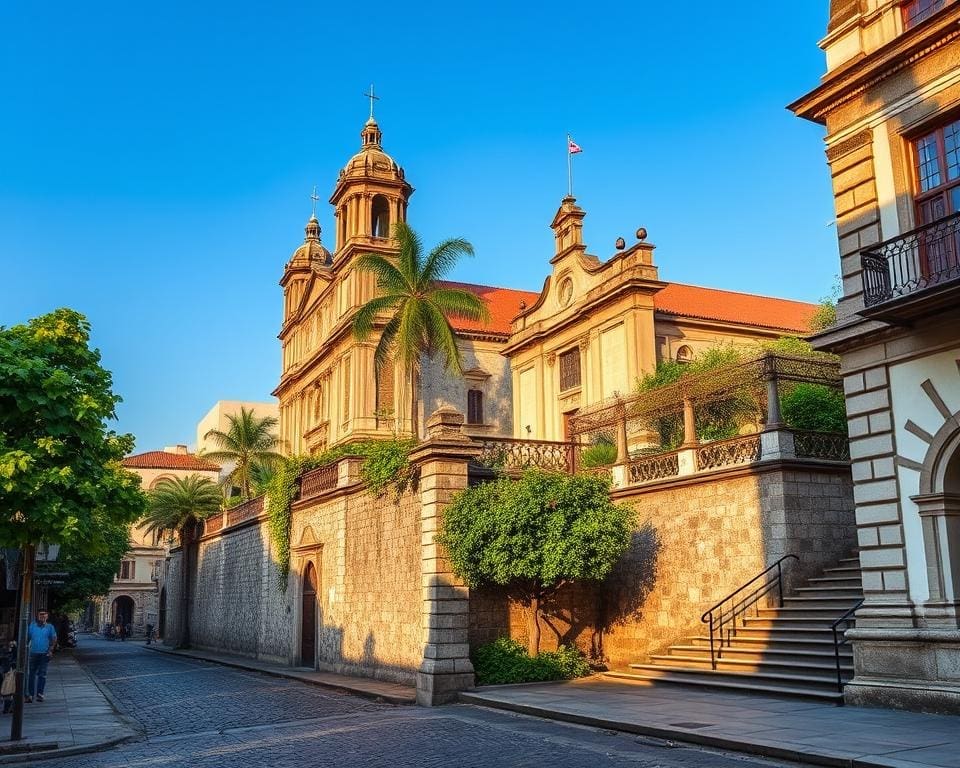Welcome to Manila, a vibrant city that is a tapestry of cultures, where every street echoes with the stories of the past. To truly understand the essence of this capital, one must delve into Intramuros, the historic heart of Manila. This walled city stands as a remarkable testament to Spanish colonial history, inviting travellers to explore Manila’s rich heritage.
As you wander through the cobblestone streets of Intramuros, you will encounter a blend of architectural wonders and significant landmarks that reveal a legacy of resilience and transformation. Each corner of this fortified district speaks volumes about the Spanish era, offering an enriching experience for those eager to uncover the layers of Manila’s past. Prepare yourself to embark on a journey that not only celebrates the durability of history but also inspires a deep appreciation for the vibrant culture that Manila continues to embrace today.
Uncovering Manila’s Rich Historical Tapestry
Manila’s history serves as a fascinating tapestry woven from threads of diverse cultures, influences, and transformations. As a vital trade centre in Southeast Asia, the city embodies centuries of indigenous heritage alongside European colonial impact. A deep dive into this historical essence reveals the significant role of Spanish colonial history, which has profoundly shaped the architectural and cultural landscape of Manila.
Introduction to Manila’s Historical Significance
To truly understand Manila’s significance, one must appreciate the various layers of history embedded within its streets. From early indigenous settlements to a bustling metropolis, Manila’s evolution reflects the dynamics of global trade and cultural exchange. Exploring Manila reveals a narrative enriched by interactions between native populations and foreign settlers, making it an essential destination for history enthusiasts.
Overview of Spanish Colonial History in the Philippines
Spain’s rule over the Philippines, lasting over 300 years, marked a pivotal era in Manila’s development. The establishment of Intramuros in the late 16th century as a fortified city laid the foundation for political and cultural dominance in the region. This period introduced European architectural styles, religious beliefs, and various socio-economic structures that would influence generations to come. The remnants of this era continue to fascinate many who wish to uncover the Spanish colonial history that defines parts of the city today.
Key Events That Shaped Intramuros
A few key events have dramatically transformed Intramuros, reflecting the resilience of its people. The destruction during World War II left a scar on Manila, yet its restoration highlights the determination to honour the past while looking towards the future. Key historical sites Manila offers today allow visitors to witness this journey of reconstruction and renewal.

Manila: Explore Intramuros and Spanish Colonial History
Intramuros, the historic walled city of Manila, serves as a captivating portal to the Philippines’ colonial past. Strolling through its ancient pathways presents an opportunity to connect with the nation’s rich history. The remarkable architecture and the stories tied to each structure make an intramuros tour an unforgettable experience for both locals and visitors alike.
A Walk Through the Walled City of Intramuros
Embarking on a walk through Intramuros reveals its timeless charm. Each turn invites you to uncover hidden gems along the cobblestone streets. The palpable sense of history envelops visitors, creating a feeling of nostalgia. As you explore, be prepared to encounter an array of fascinating manila attractions that celebrate the city’s colonial era.
Must-Visit Historical Sites in Intramuros
Intramuros boasts a myriad of historical sites manila has to offer, including:
- Fort Santiago: A pivotal fortress integral to the nation’s story of resistance and resilience.
- San Agustin Church: The oldest stone church in the Philippines, showcasing beautiful baroque architecture.
- Casa Manila: A museum replicating a Spanish colonial house that offers insight into daily Filipino life during the era.
Each destination sings the tales of its past, serving as a testament to the country’s rich heritage and routes shared with the world.
Experiencing Colonial Architecture: A Visual Journey
The intricate beauty of Intramuros’ colonial architecture enchants every visitor. Baroque influences, ornate wooden carvings, and beautifully designed Spanish-style plazas transport you back in time. Every corner showcases the artistic flair of a bygone era, making it a feast for photographers and history enthusiasts. An intramuros tour not only allows appreciation of these historical sites manila is renowned for but also offers an immersive glimpse into the architectural prowess of the period.
Experiencing Manila Through Its Attractions
While delving into the historical marvels of Intramuros, visitors will find that the allure of Manila extends far beyond its colonial past. To truly explore Manila is to embrace the rich tapestry of contemporary attractions that complement the city’s stunning heritage. From lively markets filled with local crafts to an array of contemporary dining options, there are countless opportunities to immerse oneself in the vibrant atmosphere of the Philippines’ capital.
The iconic Rizal Park offers a breath of fresh air amid the urban landscape, where one can reflect on the profound history of the nation while enjoying serene surroundings. The National Museum Complex invites culture enthusiasts to delve deeper into the country’s artistic and historical treasures, showcasing the evolution of Filipino identity through various exhibitions. Additionally, the bustling Binondo district, known as the world’s oldest Chinatown, serves as a delightful culinary adventure, inviting visitors to savour traditional dishes that narrate the tale of Manila’s multicultural influences.
By weaving together the historic with the modern, a trip to Manila becomes an engaging journey that unveils both the past and present of this dynamic city. This perspective enhances the overall manila travel experience, allowing one to appreciate not only the architectural elegance of yesterday but also the stylish and innovative spirit that defines today’s Manila. Embrace the synergy between history and modernity, and witness Manila as it thrives as a global destination ready to welcome all adventurers.









